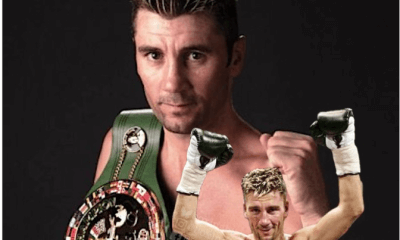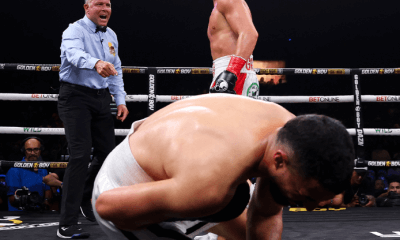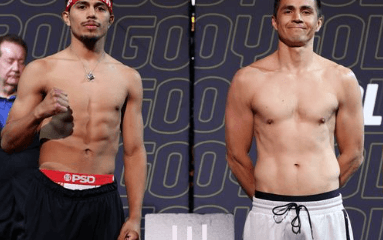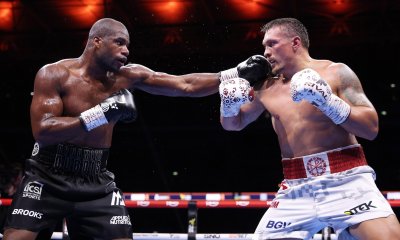Featured Articles
Terence Crawford Has Conquered the World, and Now He’s Won Over Nebraska
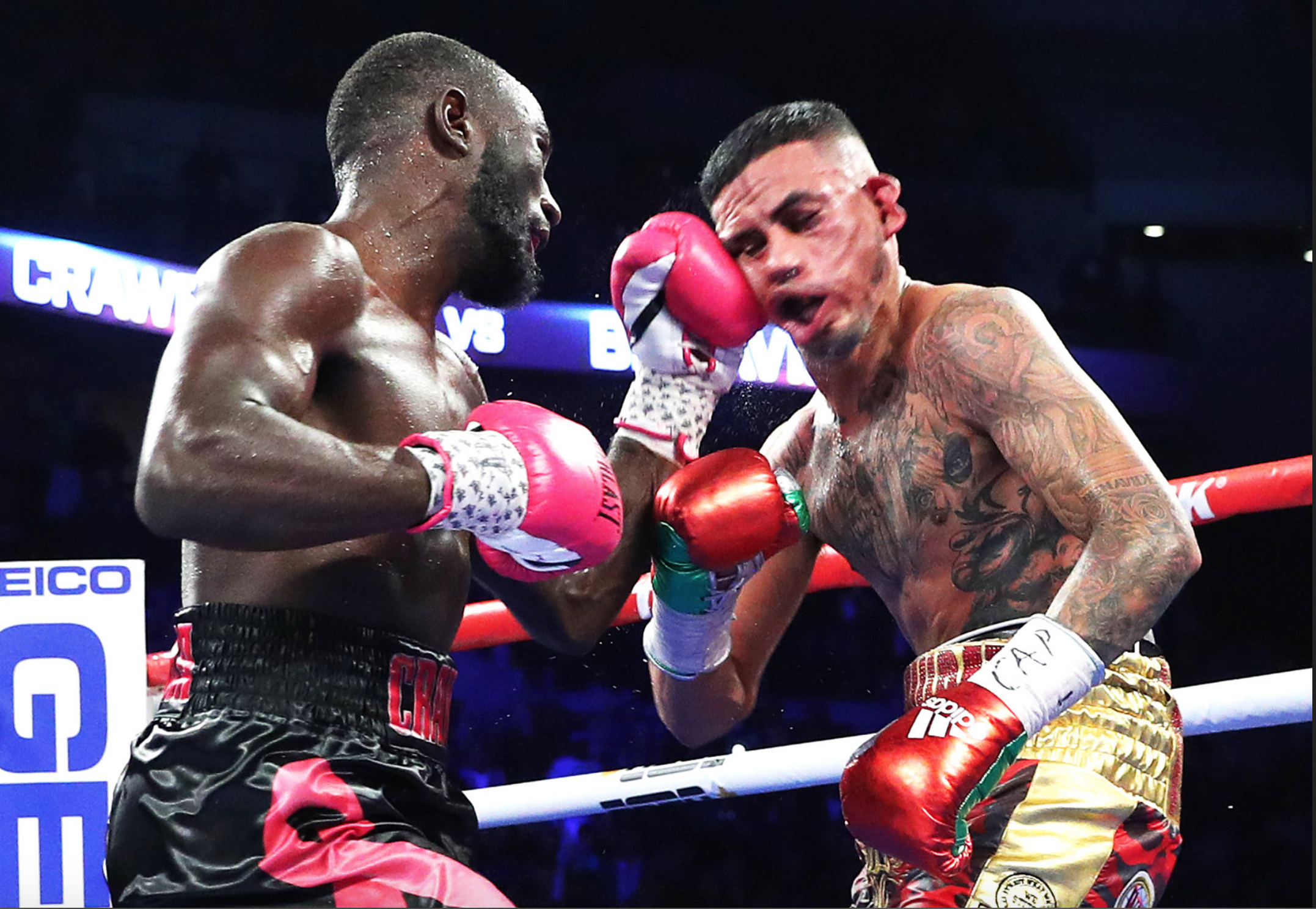
It was a day of even more anguish for Nebraskans, making for a night of even more exultation in a state where boxing – or, at least a particular boxer – is emerging as a hero and much-needed source of pride for citizens left wondering about the sorry state of the once-mighty Nebraska Cornhuskers.
Hours after those Cornhuskers snatched defeat from the jaws of victory, blowing a 10-point lead in the final 5 minutes, 21 seconds to fall 34-31 in overtime at Northwestern and begin a college football season 0-6 for the first time in program history, WBO welterweight champion Terence “Bud” Crawford defended his title with panache and power, stopping previously undefeated challenger Jose Benavidez, Jr. in the 12th round to buttress his argument that he is the best pound-for-pound fighter on the planet. There are still pockets of resistance to his claim to that designation, of course, but none coming from the ESPN broadcast crew of Joe Tessitore, Timothy Bradley Jr. and Mark Kriegel, all of whom intermittently offered their opinion that the switch-hitting Omaha resident has now firmly established himself as best of the best.
The 31-year-old Crawford’s latest bravura performance was met with shouted hosannas of approval from the sellout crowd of 13,323 in Omaha’s CHI Health Center, a record for a boxing event in Nebraska, and a stark contrast to the burgeoning sense of panic among Cornhusker partisans, who have to be wondering who these impostors in the red-and-white uniforms are.
Crawford grew up in a poor section of Omaha as an avid Nebraska fan, and after his latest demonstration of nimble footwork, fast, accurate hands and surprising power you could hardly blame his fellow home-state citizens from wondering if he might be persuaded to enroll at NU and play quarterback for his floundering favorite team. The ability to finish strong, taking the fight even harder to Benavidez in the final round when the more prudent move might have been to simply run out the clock, stamps Crawford as the pugilistic equivalent of Tommie Frazier, the option master who led the Huskers to back-to-back national championships in 1994 and ’95. But even the legendary Frazier wasn’t perfect; he was 43-3 as a starter during his four-year college career. Crawford, now 34-0 with 25 wins inside the distance, has a vision of someday retiring undefeated, a goal that at this stage seems entirely reasonable.
Top Rank founder and CEO Bob Arum, Crawford’s promoter, cited the fighter’s 12th-round mugging of Benavidez, the key blow being a ripping right uppercut that he had hidden up his figurative sleeve like a card sharp’s ace, as proof that the three-division world champion is indeed separate and above the madding crowd.
“Most fighters today, in that position, having clearly won the fight, would back off in the 12th round, not take any chances and run out the clock,” Arum said. “Not him. He’s a performer. He wanted to close the show, and that’s what he did. That’s what makes him special. That is not the mindset most (other fighters) have. But Terence is a showman. He wants to make a statement.”
He especially wanted to make it, and as loudly as possible, against the mouthy Benavidez (27-1, 18 KOs), who has been talking smack about Crawford for months and gave him a hard shove at Friday’s weigh-in, which precipitated a retaliatory right hook from the champion. It missed, thankfully, but no matter. Crawford landed plenty of shots that did when it mattered, smoothly alternating, as always, from an orthodox stance to southpaw and back again.
“We just took our time today,” Crawford said, referring to himself in the plural rather than the singular, a nod toward his support team, most notably manager-trainer Brian McIntyre. “Everything that went on this week, he was trying to get in my head, wanting me to have a firefight with him. I knew if we got in a rhythm we could do whatever we wanted, and that’s what we did.
“He made me work in the early rounds. He was trying to counter me, working on my distance. I couldn’t figure it out at first. But once I got my distance, it was a rout from there.”
Maybe the rout evolved methodically and in a controlled fashion because that’s what Crawford, who had vowed to “punish” Benavidez for his impertinence, had in mind all along. He is a man of his word, and, also as he had vowed, he declined to touch gloves with Benavidez or to offer even a halfhearted hug after the final bell. No surprise there; like fellow Omaha native Bob Gibson, the St. Louis Cardinals’ Hall of Fame pitcher, he regards all opponents as the enemy and thus off-limits to fraternization of any kind.
What about that kept-in-reserve uppercut, which sent Benavidez tumbling awkwardly to the canvas and in obvious distress?
“I’d been seeing it rounds and rounds ahead of time,” said Crawford, who is now 5-0 in Omaha and 6-0 in Nebraska, counting a sole appearance in Lincoln. “I seen him pulling back,but then he stopped pulling back so I started leaning more and more because I was touching him to the body. Then I threw the shot, and it landed.”
For those with a need to crunch numbers, official scorecards through 11 completed rounds all had the overwhelming wagering choice – Crawford went off at minus-3,000, or a 1-to-30 favorite – winning big on the scorecards tallied by judges Levi Martinez (110-99), Robert Hecko (108-101) and Glenn Feldman (107-102). Punch statistics furnished by CompuBox also were conclusive if not necessarily off-the-charts, with Crawford landing 186 of 579, a decent but not overly so 32.1 percent, to 92 of 501 (18.4 percent) for the outclassed but game Benavidez. But boxing is basically an art form, not math, and like all artists Crawford is more about aesthetic impression than raw data.
For his part, Benavidez, who had promised to “shock the world” by “exposing” Crawford, figured he had done as well, if not better, than most of Bud’s previous victims.
“I gave him a hell of a fight,” Benavidez reasoned. “But I got tired. Boxing, you know. I was pretty impressive. I wanted to give the fans a fight that they paid to come watch. I know he didn’t think I would be that good.
“I take nothing from him. He’s the best of the best for a reason. He’s a good fighter, you know? But I’m a good fighter, too. I had that fight close.”
In the co-featured bout, 21-year-old featherweight Shakur Stevenson (9-0, 5 KOs), a silver medalist at the 2016 Rio de Janeiro Olympics, was much more dynamic than he had been in scoring a relatively pedestrian eight-round unanimous decision over Carlos Ruiz on Aug. 18 in Atlantic City, blasting out Romanian veteran Viorel Simion (21-3, 9 KOs) in one round. The southpaw Stevenson’s weapon of choice was the right hook, which he used to telling effect to floor Simion three times, prompting referee Curtis Thrasher to wave the bout off after an elapsed time of three minutes.
Simion, a 36-year-old Romanian whose previous losses were to former world champions Lee Selby and Scott Quigg, was penciled last in as a replacement for the injured Duarn Vuc, had never been stopped in his 12-year pro career and he looked askance at Thrasher, as if disbelieving that he would not be given the opportunity to fight his way out of trouble in the scheduled 10-rounder. But, his legs still wobbly, he was not pleading a winnable case.
“My power was here tonight, and my speed,” said Stevenson, who claimed the vacant WBC Continental Americas 126-pound title. “Ain’t too much more that I can work on, but I’m going to keep staying sharp and get right back in the gym.”
Check out more boxing news on video at The Boxing Channel
-

 Featured Articles2 weeks ago
Featured Articles2 weeks agoResults and Recaps from New York Where Taylor Edged Serrano Once Again
-

 Featured Articles2 weeks ago
Featured Articles2 weeks agoResults and Recaps from NYC where Hamzah Sheeraz was Spectacular
-

 Featured Articles3 weeks ago
Featured Articles3 weeks agoFrom a Sympathetic Figure to a Pariah: The Travails of Julio Cesar Chavez Jr
-

 Featured Articles2 weeks ago
Featured Articles2 weeks agoPhiladelphia Welterweight Gil Turner, a Phenom, Now Rests in an Unmarked Grave
-
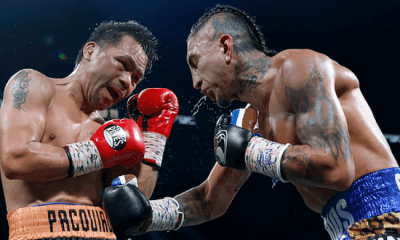
 Featured Articles7 days ago
Featured Articles7 days agoManny Pacquiao and Mario Barrios Fight to a Draw; Fundora stops Tim Tszyu
-

 Featured Articles3 weeks ago
Featured Articles3 weeks agoCatterall vs Eubank Ends Prematurely; Catterall Wins a Technical Decision
-
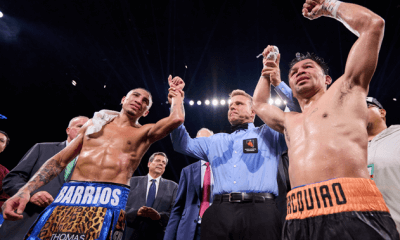
 Featured Articles5 days ago
Featured Articles5 days agoArne’s Almanac: Pacquiao-Barrios Redux
-
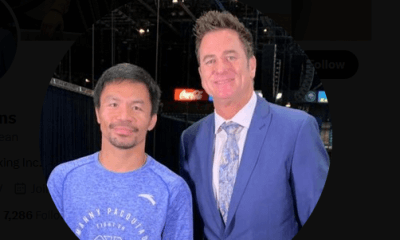
 Featured Articles2 weeks ago
Featured Articles2 weeks agoFrom the Boondocks to the Big Time, The Wild Saga of Manny Pacquiao’s Sidekick Sean Gibbons


